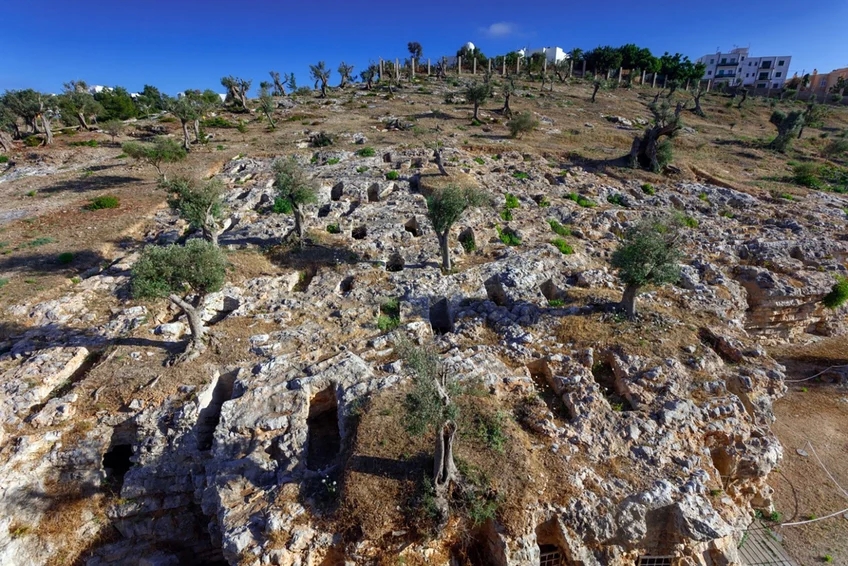We reach more than 65,000 registered users in Dec!! Register Now

Phoenician culture spread mainly through cultural exchange
- July 02, 2025
- 2 Views
- 0 Likes
- 0 Comment
Study challenges long-held assumptions about the Mediterranean Phoenician-Punic civilization, one of the most influential maritime cultures in history
- Secret of the Phoenician-Punic civilization's success: Their culture spread across the Mediterranean not through large-scale mass migration, but through a dynamic process of cultural transmission and assimilation.
- Melting pot of ancient people: The study found that Punic populations had a highly variable and heterogeneous genetic profile, with significant North African and Sicilian-Aegean ancestry.
- Highly interconnected: Ancient Mediterranean societies were cosmopolitan, with people from different regions trading, moving often over large distances and having offspring with each other. This provides new insights into the region's cultural and population history in the first millennium BCE.
By the 6th century BCE, Carthage, a Phoenician coastal colony in what is now Tunisia, had risen to dominate this region. These culturally Phoenician communities associated with or ruled by Carthage became known as “Punic” by the Romans. The Carthaginian empire left its mark in history, particularly well-known for the three large-scale “Punic Wars” with the rising Roman Republic, including the Carthaginian general Hannibal’s surprise campaign to cross the Alps.
Within the framework of the Max Planck-Harvard Research Center for the Archaeoscience of the Ancient Mediterranean, co-directed by Johannes Krause, Director at the Max Planck Institute for Evolutionary Anthropology, and Michael McCormick of Harvard University, an international team of researchers has now presented a study on the genetic history of these ancient Mediterranean civilizations.
New perspective on the spread of Phoenician culture
© Harald Ringbauer
The researchers revealed an unexpected result. “We find surprisingly little direct genetic contribution from Levantine Phoenicians to western and central Mediterranean Punic populations,” says lead author Harald Ringbauer, who was a post-doctoral scientist at Harvard University when he began this research, and is now a group leader at the Max Planck Institute for Evolutionary Anthropology. “This provides a new perspective on how Phoenician culture spread—not through large-scale mass migration, but through a dynamic process of cultural transmission and assimilation.”
The study highlights that Punic sites were home to people with vastly different ancestry profiles. “We observe a genetic profile in the Punic world that was extraordinarily heterogeneous,” says David Reich, a professor of Genetics and Human Evolutionary Biology at Harvard University who co-led the work. “At each site, people were highly variable in their ancestry, with the largest genetic source being people similar to contemporary people of Sicily and the Aegean, and many people with significant North African associated ancestry as well.”
Ancient DNA reveals cosmopolitan nature of Punic world
© Museo Arqueológico Nacional Madrid
“These findings reinforce the idea that ancient Mediterranean societies were deeply interconnected, with people moving and mixing across often large geographic distances,” says Ilan Gronau, a professor of Computer Science at Reichman University in Herzliya, Israel, who co-led the work. He adds: “Such studies highlight the power of ancient DNA in its ability to shed light on the ancestry and mobility of historical populations for which we have relatively sparse direct historical records”.
List of Referenes
- Harald Ringbauer, Ayelet Salman-Minkov, Dalit Regev, Iñigo Olalde, Tomer Peled, Luca Sineo, Gioacchino Falsone, Peter van Dommelen, Alissa Mittnik, Iosif Lazaridis, Davide Pettener, Maria Bofill, Ana Mezquida, Benjamí Costa, Helena Jiménez, Patricia Smith, Stefania Vai, Alessandra Modi, Arie Shaus, Kim Callan, Elizabeth Curtis, Aisling Kearns, Ann Marie Lawson, Matthew Mah, Adam Micco, Jonas Oppenheimer, Lijun Qiu, Kristin Stewardson, J. Noah Workman, Nicholas Márquez-Grant, Antonio M. Sáez Romero, María Luisa Lavado Florido, Juan Manuel Jiménez-Arenas, Isidro Jorge Toro Moyano, Enrique Viguera, José Suárez Padilla, Sonia López Chamizo, Tomas Marques-Bonet, Esther Lizano, Alicia Rodero Riaza, Francesca Olivieri, Pamela Toti, Valentina Giuliana, Alon Barash, Liran Carmel, Elisabetta Boaretto, Marina Faerman, Michaela Lucci, Francesco La Pastina, Alessia Nava, Francesco Genchi, Carla Del Vais, Gabriele Lauria, Francesca Meli, Paola Sconzo, Giulio Catalano, Elisabetta Cilli, Anna Chiara Fariselli, Francesco Fontani, Donata Luiselli, Brendan J. Culleton, Swapan Mallick, Nadin Rohland, Lorenzo Nigro, Alfredo Coppa, David Caramelli, Ron Pinhasi, Carles Lalueza-Fox, Ilan Gronau, David Reich. Punic people were genetically diverse with almost no Levantine ancestors. Nature, 2025; DOI: 10.1038/s41586-025-08913-3
Cite This Article as
No tags found for this post









